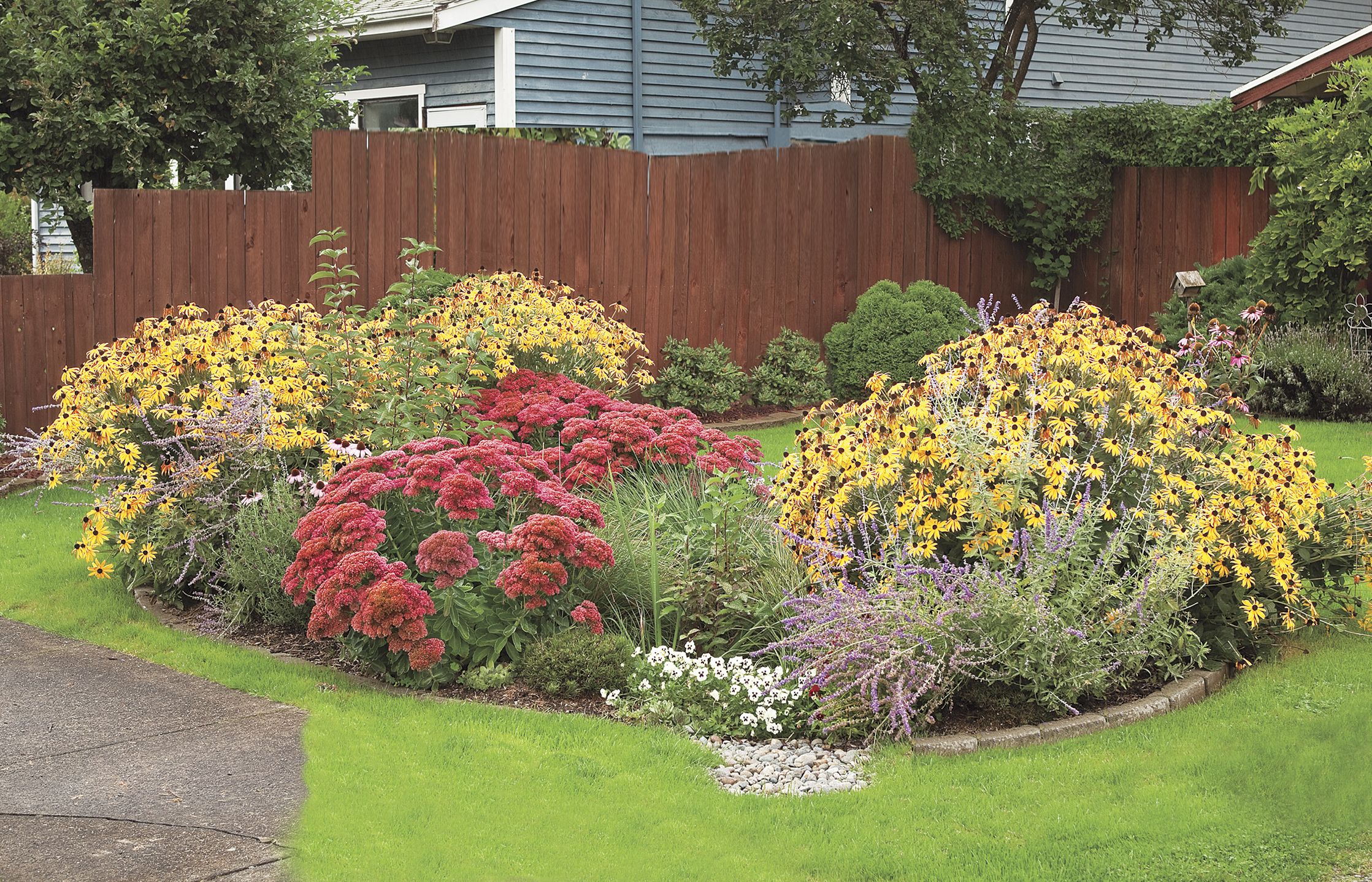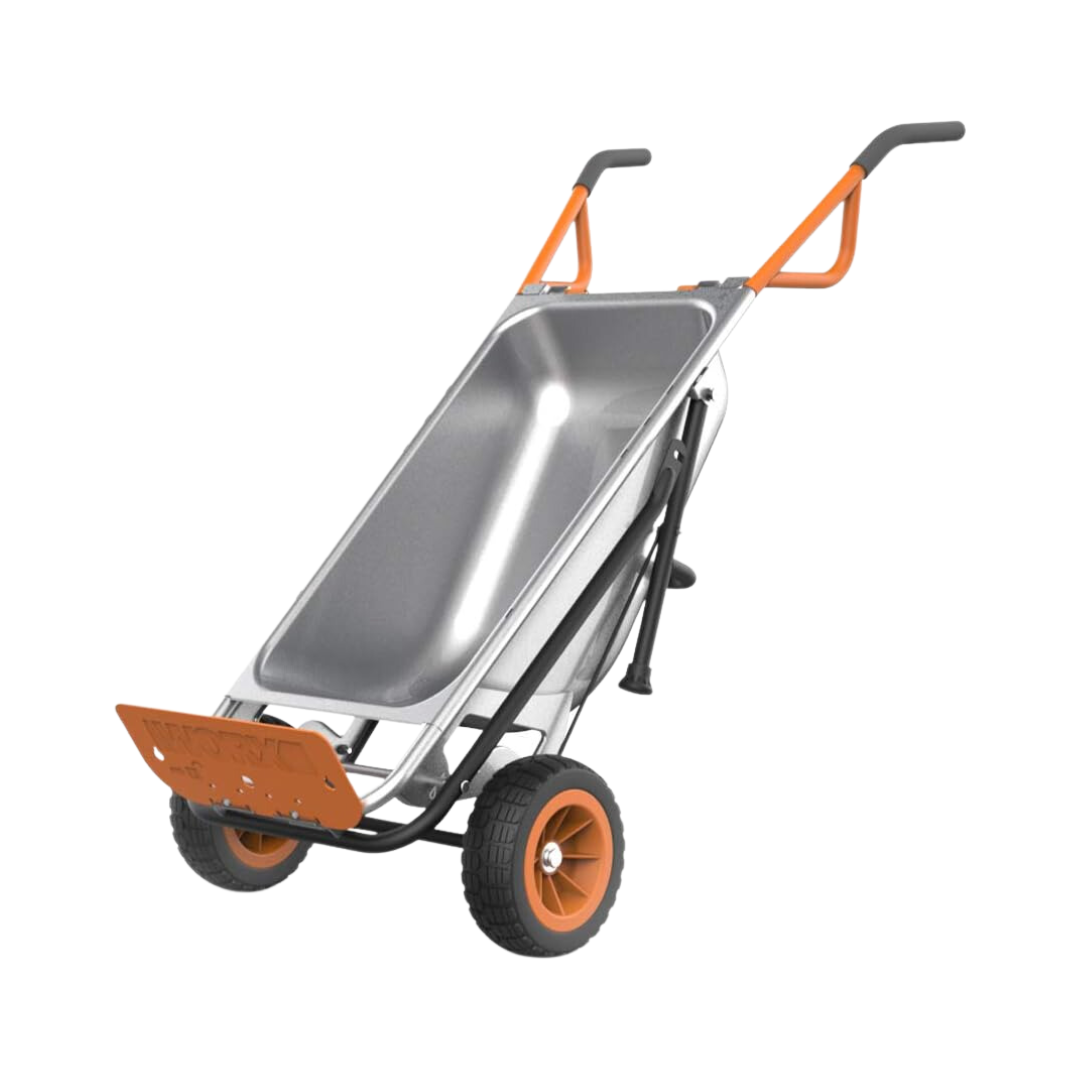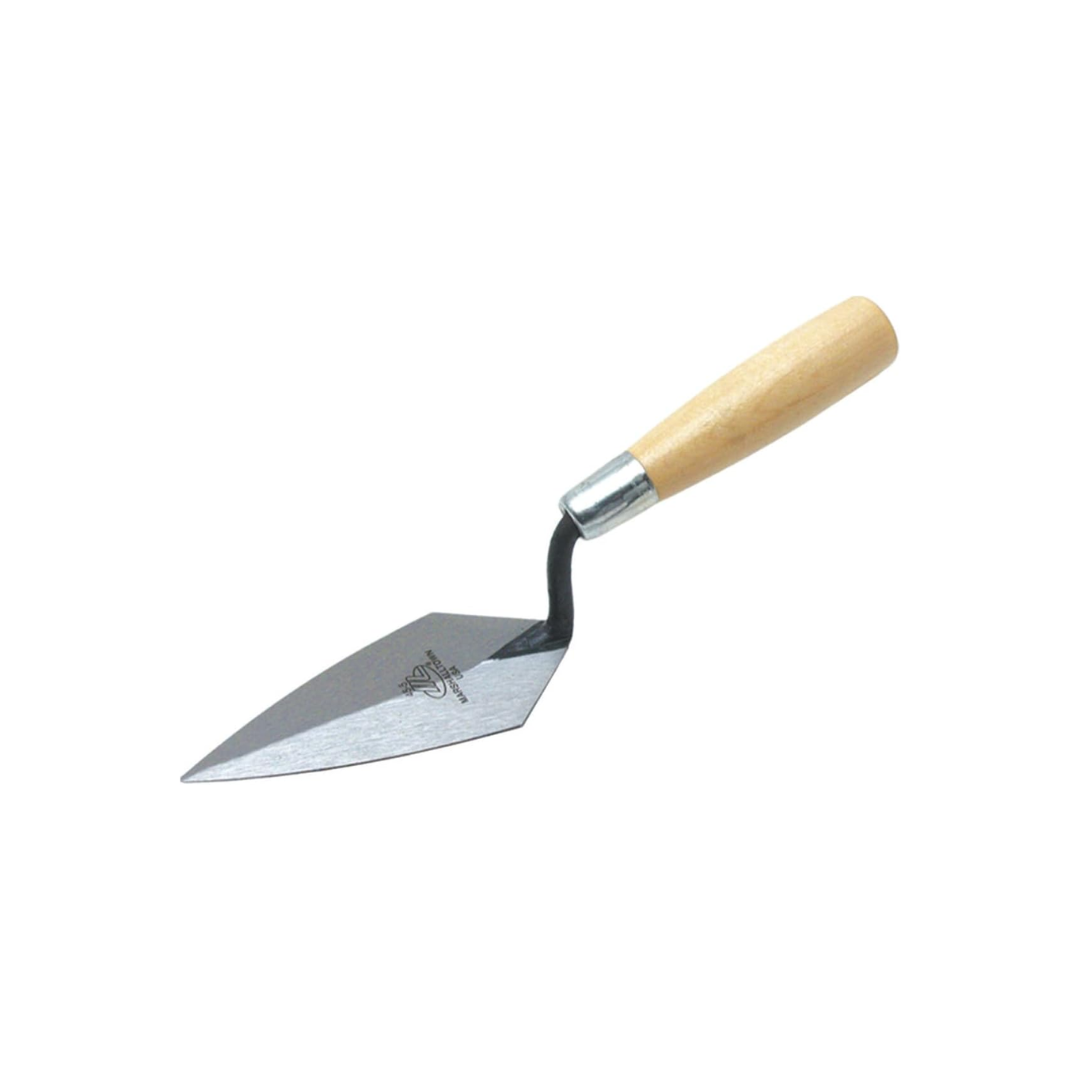We may be compensated if you purchase through links on our website. Our team is committed to delivering honest, objective, and independent reviews on home products and services.
Project details
Skill
Cost
Estimated Time
Rain gardens can be an environmentally friendly way to manage rainwater runoff and improve water quality in your yard. They help water filter slowly into the ground, removing pollutants and reducing the strain on municipal storm sewer systems.
With some basic tools, a bit of planning, and a weekend or two of work, you can turn a water-logged area in your yard into a beautiful and eco-friendly feature. We will guide you through the steps to build your own rain garden, from planning and design to installation and maintenance.
Why Build a Rain Garden?
Rain gardens are strategically placed to intercept water from impermeable surfaces like roofs, driveways, and patios before it enters the storm sewer system. As water flows into the garden, it slowly percolates through layers of soil and plant roots. This process removes pollutants such as fertilizers, pesticides, and oil residue from the water before it enters the groundwater system. The plants in the rain garden also help absorb excess nutrients, further purifying the water.
Rain gardens reduce the volume of stormwater entering municipal systems, which helps prevent flooding and erosion in local waterways. They can also help recharge groundwater supplies, which is especially important in drought-prone areas.
Planning Your Rain Garden
First, find the right location. Your rain garden should be at least 10 feet away from your home’s foundation and 50 feet from septic systems or steep slopes. Avoid areas with high water tables or existing drainage issues.
Ideally, choose a naturally low-lying area that can easily receive runoff from downspouts or other impervious surfaces. Call 811 to make sure underground utilities aren’t in the way, either.
Determine the Size and Shape
Your rain garden’s size depends on the amount of runoff it will receive and your available space. A general rule of thumb is to make your rain garden about 20%-30% of the size of the area draining into it. As for shape, rain gardens can be oval, kidney-shaped, or even long and narrow. We recommend using a garden hose to outline potential shapes and see what looks best in your landscape.
Calculate the Appropriate Depth
The depth of your rain garden should be based on the soil’s drainage capability and the amount of runoff it needs to handle. It’s best to create a basin that can hold water temporarily and allow it to soak into the ground within 24-48 hours. A depth of 18 inches is typically sufficient for soil with good drainage. If the soil drains slowly, you may need to dig up to 30 inches deep.
To make sure you have the right depth, you can test your soil’s percolation rate. Dig a hole about 2 feet deep at your proposed rain garden site. Fill the hole with water and let it drain completely. Dig a hole 2 feet deep and time how long it takes for 8 to 12 inches of water to disappear.
For example, if 8 inches drains in 12 hours, the rate is 8 inches divided by 12 hours, or 0.67 inches per hour. A rate higher than 0.5 is great — your rain garden needs to be just 18 inches deep. If the rate is lower than 0.5 you’ll have to dig 30 inches deep.
If the percolation rate is less than 0.1, the site isn’t suitable for a rain garden.
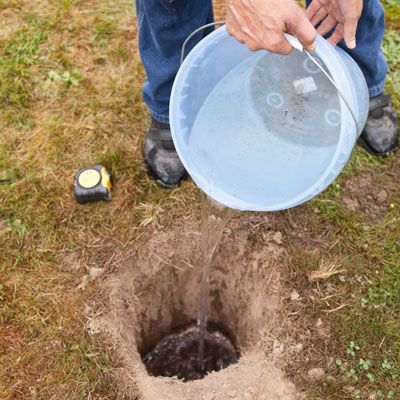
Picking the Right Plants
Choose native plants that can tolerate both wet and dry conditions. They are well-suited to the local environment and provide excellent habitat for wildlife. Divide your rain garden into three zones based on moisture levels: the center (wettest), the middle slope, and the outer edge (driest). Select plants for each zone based on their water tolerance. Ask your local cooperative extension office for specifics about plants for your area.
Tools and Materials for Rain Garden Construction
Below, we’ve listed the tools and materials needed to build your rain garden. Instead of the shovel, you may need a small excavator for larger projects.
Tools
Materials
- Landscape fabric
- Native plants
- PVC pipes or flexible drainage pipes with fittings and connectors (as needed)
- Soil mix (60% sand, 20% topsoil, and 20% compost)
Select piping that can handle the volume of water from your roof. PVC pipes are durable and easy to work with, while flexible corrugated pipes can be useful for navigating around obstacles. Ensure the pipe diameter matches your downspout output.
How To Build Your Rain Garden
Follow these steps to start building your rain garden.
Step 1: Site Preparation and Excavation

Begin by marking the outline of your rain garden using spray paint or a garden hose. Remove any existing grass within this area, either by hand or with a sod cutter. Then, start digging to your calculated depth, creating a flat bottom and gently sloping sides.
Step 2: Create the Basin and Berm

Dig down to the depth you need using a shovel or an excavator. Create a flat bottom so that water will percolate down evenly. If the rain garden is on a slope, pile some of the excavated soil into a berm on the low side to retain the water.
For stability, stomp the berm soil down well and make the base at least 2 feet wide and the top at least 1 foot wide. When the rain garden is full, the peak of the berm should be at least 6 inches higher than the water level.
Step 3: Lay the Inlet Pipe
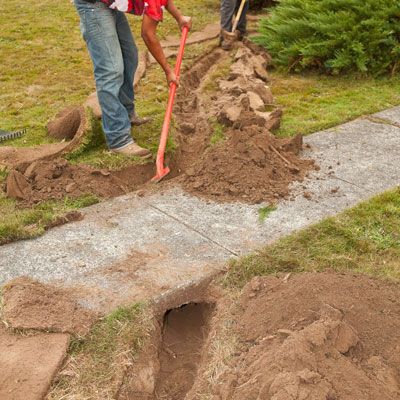
Dig a trench from your downspout to the rain garden. Lay your drainage pipe in this trench, ensuring it has a slight downward slope towards the garden. Extend the pipe slightly into the rain garden basin and surround the outlet with rocks to prevent erosion.
Step 4: Fill the Basin
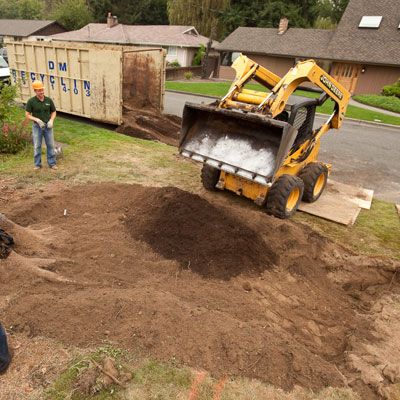
Fill all but the excavated area’s top six to 12 inches with rain-garden soil. Slope the sides gently. If the soil you excavated is relatively free of clay, you can use a mixture of 65% native soil to 35% compost, or 2 scoops of soil for each scoop of compost.
If you dug out clay soil, refill it with a mixture of 60% screened sand and 40% compost. If you are creating a dry well, fill it with washed round stones 1 1/2 to 2 inches in diameter.
Step 5: Connect the Downspouts
Disconnect your downspout from any existing drainage system. Attach an elbow or downspout adapter to direct water into your new piping. Bury the pipe at least a few inches underground to protect it from lawnmowers and foot traffic. At the rain garden end, create a small spillway lined with rocks to disperse water flow and prevent erosion.
Step 6: Zone Your Plants
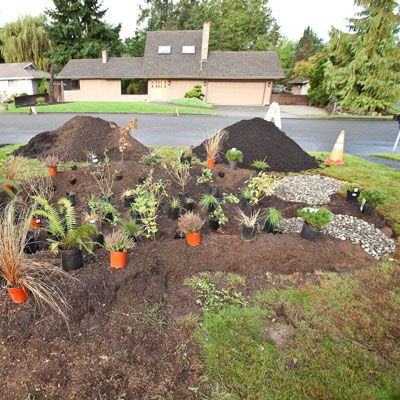
Divide your rain garden into three planting zones based on moisture levels. The center will be the wettest, so choose plants that can tolerate standing water. The middle zone should have plants that can handle occasional flooding, while the outer edge should feature more drought-tolerant species.
Plant your selections according to their mature sizes, allowing enough space between them. Dig holes twice as wide as the root balls and place plants at the same depth they were in their containers. Water thoroughly after planting to help establish root systems.
Step 7: Mulch Around the Plants
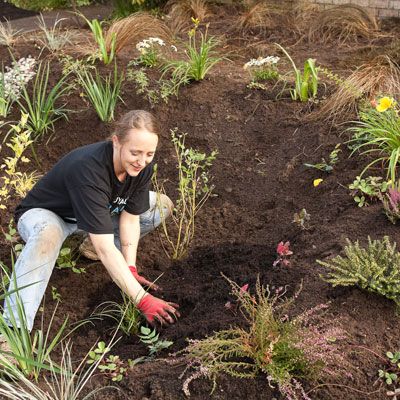
Apply a 2-3 inch layer of organic mulch around your plants, being careful not to cover the plant stems. Avoid using floating mulches that can wash away during heavy rains.
Maintaining Your Rain Garden
Investing in proper maintenance will keep your rain garden functioning effectively and looking beautiful for years to come. Here are some tips for maintaining your rain garden.
Watering and Irrigation
Water your rain garden regularly during the first growing season to help establish plants. After that, your garden should only need supplemental watering during prolonged dry periods. Observe how water flows into and through your garden during rain events to ensure it’s functioning as intended.
Pruning and Weeding
Remove weeds regularly, especially in the first few years, as your plants establish themselves. Depending on the species, prune dead or overgrown plant material in early spring or fall. Divide perennials every few years to maintain healthy growth and prevent overcrowding.
Inspecting Your Garden
Inspect your rain garden periodically for signs of erosion, especially after heavy rains. Replace mulch annually or as needed. Monitor plant health and replace any that don’t thrive. Over time, you may need to remove accumulated sediment to maintain the garden’s capacity.
Troubleshoot Common Rain Garden Issues
Even well-designed rain gardens can encounter problems. Here are some common issues and how to address them.
Overflow During Heavy Rains
If your rain garden frequently overflows, consider enlarging it or creating a secondary overflow area. Ensure the berm is high enough and well-compacted to contain water. You may also need to redirect some runoff to other areas of your yard during extreme weather events.
Plant Health Problems
If plants are struggling, reassess their placement in the garden. Some may need to be moved to drier or wetter zones. Check for pest or disease issues and treat them as necessary, preferably using organic methods to maintain the garden’s ecological benefits.
Poor Drainage
If water has accumulated in your rain garden for more than 48 hours, you may have a drainage issue. To improve percolation, try aerating the soil or adding more organic matter. In severe cases, you may need to install an underground drainage pipe.
